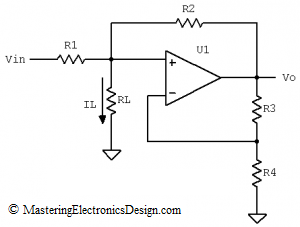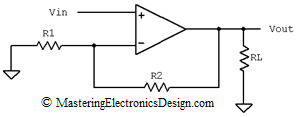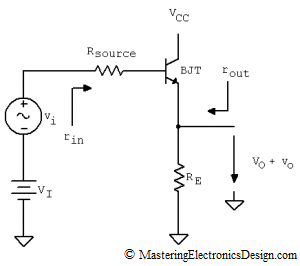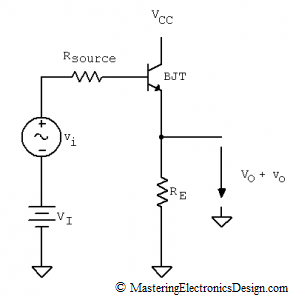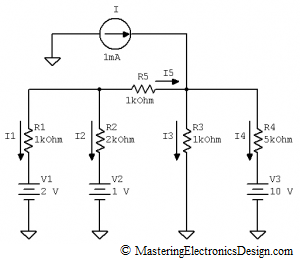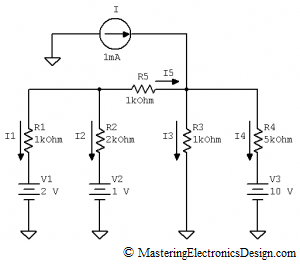What are Nested Thevenin Sources? I came up with this name recently, while talking to an engineer about a design problem. I just said it, and I liked it. I then went and searched on Internet to see if anybody else used the term Nested Thevenin Sources before. I did not find it so, here it is. Let’s talk about it.
I borrowed the term from “nested loops” in the programming world. The main idea is that you can use a method to accomplish a task inside another method of the same kind, hence the word nested. As we saw in How to Apply Thevenin’s Theorem – Part 1, Thevenin’s Theorem is widely used to simplify the solving of a complex circuit.
With the Nested Thevenin Sources Method you first start to apply this theorem on a complex circuit. The circuit is simplified, but it is still too complex to solve with loop and node equations. Because of that, you apply the theorem again, and you simplify the circuit even more, and so on. At some point, the circuit simplifies so much that, with just a glance, you can tell what is the Thevenin voltage and resistance.
After you find the most inner source Thevenin voltage and resistance, you make your way back and find the currents and voltages up to the highest Thevenin source in the rank.
Let’s apply this method on the same circuit I used in Part 1 of this series. The circuit is given in Figure 1. The design asks to find all the currents in the circuit branches. We will choose the same branch as in the previous article, R2 and V2. Being a circuit with independent sources, we can choose any other branch. For a circuit with dependent sources things are different, but we will talk about this in a future article.
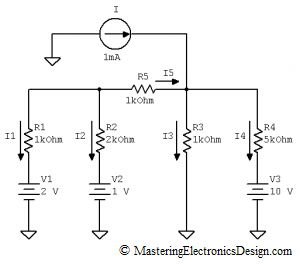
Figure 1
Read more



